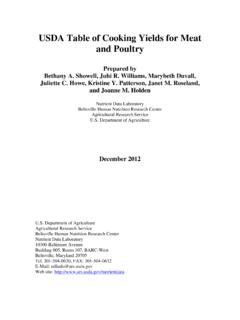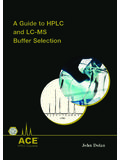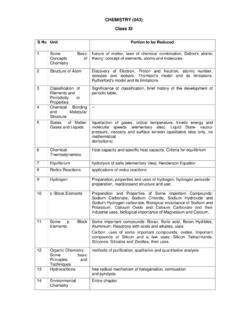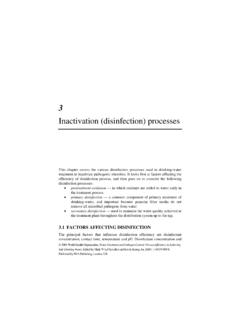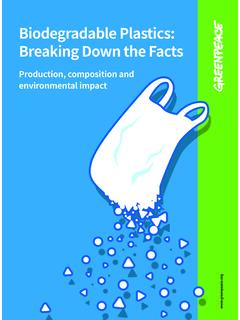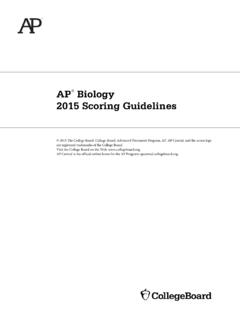Transcription of Basic Concepts in Pharmacokinetics - Warwick
1 Leon Aarons Manchester Pharmacy School University of Manchester Basic Concepts in Pharmacokinetics Objectives Pharmacokinetics absorption distribution elimination Why do we study PK? We administer drugs (dose) because we seek a certain effect (response), but a complex chain of events links the administered dose to the observed response Pharmacokinetics Pharmacodynamics Drug concentration Image from PK is based on the analysis of drug concentrations. After one or more doses ( ), the drug concentration in the desired matrix is measured (- -). (L)ADME The processes that characterize PK are summarized in the (L)ADME scheme. Elimination Disposition Image from Absorption Distribution Dose of drug Pharmacological effect Drug at active site Drug in blood I N P U T L O S S Metabolism (M) + Excretion (E) Elimination Need to maintain plasma concentration of a drug to achieve a therapeutic effect Absorption Absorption - Passage of compound from the site of administration into the bloodstream (or lymph), usually across a membrane Systemic routes of drug administration: Intravascular placement of the drug directly into blood (intravenous (iv) or intra-arterial) Extravascular oral, sublingual, subcutaneous, intramuscular, rectal Most drugs administered extravascularly act systemically.
2 In such cases, systemic absorption is a prerequisite for efficacy Local effect - systemic absorption is a safety issue. Absorption Absorption after oral administration Few potential sites of loss contributes to decrease in systemic absorption Movement of unchanged drug from the site of administration to the site of measurement Bioavailability Bioavailability (F) refers to the extent of absorption of intact drug. Generally, refers to the fraction of an extravascularly administered dose that reaches the systemic circulation intact BA studies provide useful information on the dosage/dosage regimen BA studies provide information regarding the performance of a formulation Bioavailability Relative F Absolute F Absolute F is usually assessed with reference to an intravenous dose Relative F comparison of F between formulations of a drug given by the same or different routes of administration Bioequivalence (BE) Bioequivalence: Formulations containing the same dose of same chemical entity, generally in the same dosage form, intended to be interchangeable BE documentation may be useful to.
3 Link early and late phase clinical formulations Compare clinical versus to-be-marketed formulation Evaluate change of formulation (tablet vs. capsule) Compare generic versus branded drug Bioequivalence A and B are the limits set (often 20%) around the reference product. Bioequivalent preparations generally considered to be therapeutically equivalent C- t profiles similar, NOT likely to cause clinically relevant differences in therapeutic and adverse effects! Rate limiting steps for oral absorption 1. Disintegration time and dissolution rate 2. Movement through membranes a) perfusion or b) permeability limitations 3. Gastric emptying and intestinal transit 4. First-pass metabolism in the gut/liver Can cause delay or loss of drug alteration of drug concentration! Absorption from solution: Movement through membrane 1.
4 Transcellular 2. Paracellular 3. Efflux transporters Absorption site Blood and lymph Cell Absorption Distribution Dose of drug Pharmacological effect Drug at active site Drug in blood I N P U T L O S S Metabolism (M) + Excretion (E) Elimination Need to maintain plasma concentration of a drug to achieve a therapeutic effect Distribution Distribution Distribution Volume of Distribution (Vd) = Apparent and hypothetical volume in which the drug is dispersed An equilibrium concept Relates measured plasma (or blood) drug concentration (C) to the amount of drug in the body (A) Important for drug dosage regimen to determine the loading dose = V A C Value depends on reference fluid measured (plasma, blood, unbound drug) Cb, C and Cu can differ as a consequence of binding to cells and plasma proteins A = V C = Vb Cb = Vu Cu amount plasma blood plasma water However, at equilibrium: Distribution Relative size of various distribution volumes within a 70-kg individual Plasma: 4 liters.
5 Interstitial volume: 10 liters. Intracellular volume: 28 liters Distribution Vd: around 5 L. Very high molecular weight drugs, or drugs that bind to plasma proteins excessively Example: heparin 4L (3-5) Distribution Extracellular fluid Vd: between 4 and 14 L. Drugs that have a low molecular weight but are hydrophilic. Example: Atracuronium 11 L (8-15) Distribution Vd equal or higher than total body water Diffusion to intracellular fluid . Vd equal to total body water. Ethanol 38 L (34-41) Alfentanyl 56 L (35-77) Drug that binds strongly to tissues. Vd higher than total body water. Fentanyl: 280 L Propofol: 560 L Digoxin:385 L Distribution L/70kg 50,000 10,000 1000 100 5 500 100 10 1 Quinacrine Chloroquine Desmethylimipramine Nortriptyline Pethidine Propranolol Digitoxin Warfarin Tolbutamide Cautious interpretation of V that are in the range of physiological values Drug can bind to plasma proteins, blood cells and tissue components Volume of Distribution L/kg D + P DP 1.
6 Generally reversible, very rapid 2. Extent of binding fu = fraction of drug unbound in plasma (Cu/C) 1 fu = fraction of drug bound 3. fu varies widely among the drugs Total plasma concentration (C) usually measured rather than the more important unbound concentration (Cu) Plasma Protein Binding WHY IS UNBOUND CONCENTRATION IMPORTANT? Assumption only unbound drug diffuses into tissues, have pharmacological/toxicological effect and can be eliminated Receptor Elimination Cu Cbound CuT CboundT Plasma Tissue Distribution V = VP + VT fu/fuT V fu V fuT Distribution Absorption Distribution Dose of drug Pharmacological effect Drug at active site Drug in blood I N P U T L O S S Metabolism (M) + Excretion (E) Elimination Need to maintain plasma concentration of a drug to achieve a therapeutic effect Elimination Elimination = irreversible removal of the drug from the body Metabolism liver and intestine as major sites main mechanism of drug elimination metabolites more polar than the parent drug and renally excreted Excretion kidneys - renal liver biliary excretion of drugs (hepatic) lungs - pulmonary (volatiles)
7 Elimination CLEARANCE is the parameter that relates rate of elimination to concentration: L/ h Units of flow (mg/h)/(mg/L) = CL = Rate of Elimination / C plasma PROPORTIONALITY CONSTANT If CL= 1L/hr and C= mg/L Rate of elimination = mg/hr - A steady-state concept Concept of Clearance CL is the apparent volume of plasma (or blood or plasma water) completely cleared of drug per unit of time. plasma blood plasma water Rate of elimination = CL C = CLb Cb = CLu Cu Value of clearance depends upon site of measurement Concept of Clearance Dependence of elimination on both V and CL Reservoir Pump Filter Flow rate Q Drug Volume of reservoir (V)= 1000mL Dose = 10 mg Initial concentration = 10 mg/L Perfect filter (organ), removes all drug: Flow rate 100 mL/min Clearance (Volume of blood completely cleared of drug per unit of time = Flow Rate, Q = 100 ml/min) CL = 100 mL/min Fractional rate of removal, k = 100 mL/min/1000 mL = or 10% /min Sample Amount in body (A) A = V C Fractional elimination rate constant, k, defined as.
8 K = Rate of elimination Amount = CL C V C = CL V CL = k V Dependence of elimination on both V and CL CL V Dependence of elimination on both distribution and CL t1/2 t1/2 = V CL Relationship of PK parameters ( )CLV2lnt21 =The elimination half-life is defined as the time for the drug concentration to reach half of its value. Clinically interesting because intuitive, used to calculate when steady state is reached. It is a secondary parameter, which can be derived from CL and V AUCF DoseCL =Rate of elimination = CL*C Remember that Amount eliminated = Amount eliminated = Dose*F = CL*AUC . = = . 0 0 = ( ) 0 If CL is constant with time 1. Loss Across Organ of Elimination Mass balance Rate of Elimination = Rate In Rate Out Extraction ratio (E)=Rate of In=Q CA CVQ CA=CA CVCA Q CA - Q CV Q CA Rate In Q CV Rate Out Rate of Elimination Q (1-E) CA Q (E CA) Q CA Rate In CL = Rate of Elimination Entering concentration Q (CA-CV) CA = 1.
9 Loss Across Organ of Elimination Rate Out Rate of Elimination = Q E Extraction ratio E 0 1 E = Q (CA-CV) CA Typical blood flow values Liver 1300-1500 mL/min Kidney 1100 mL/min Cardiac output 6000 mL/min E = 0 No elimination E = 1 Complete elimination Rate of Elimination = Rate of Excretion + Rate of Hepatic Metabolism Dividing by C: CL C = CLR C + CLH C 2. Additivity of Clearance CL = CLR + CLH Liver and kidney are major organs of elimination Hepatic Elimination MAJOR ROUTES: 1. Metabolism 2. Biliary Excretion Two blood supplies: Hepatic vein ( L/min) Hepatic Portal Vein ( L/min) Hepatic Artery ( L/min) Metabolism The drug is changed so it can be eliminated Generates more polar (water soluble), inactive metabolites Metabolites may still have potent biological activity (or may have toxic properties) Metabolism Metabolic enzymes and reactionsPassive diffusionCarrier mediated uptake(OATP, OCT)Phase IPhase IReactions:Enzymes:oxidationHydrolysisre ductionesterasehydrolysispeptidasedealky lationsepoxide hydrolasedeaminationReductionazo and nitro reductasecarbonyl reductasequinone reductaseOxidationcytochrome P450s (P450s or CYP)flavin-containing monooxygenases (FMO)monoamine oxidase (MAO)alcohol dehydrogenasealdehyde dehydrogenase and oxidasePhase IIReactions:Enzymes.
10 Glucuronide conjugationUDP-glucuronosyltransferases (UGT)sulfate conjugation sulfotransferase (ST) glutathione conjugationglutathione S-transferase (GST)amino acid conjugationamino acid conjugating enzymesmethylation methyl transferaseacetylation N-acethyltransferasehydration non-polar polarIn most cases, generation or exposing of functional groups(eg. -OH, -NH2, -SH, -COOH)OHO S=OPhase IIO-=OConjugation with endogenous substrates, large increase in drug polarityPhase IIIsometimes referred tocarrier mediated efflux/uptake(eg. BCRP, MRP2, ABCB1,3, BSEP)or additional conjugationPhase 0 Metabolism Phase I Converts the parent drug to a more polar metabolite by introducing or unmasking a functional group (-OH, -NH2, -SH) via oxidation, reduction, and hydrolysis Usually results in loss of pharmacological activity Sometimes may be equally or more active than parent Occurs primarily in the liver Metabolism Phase II (conjugation reactions) Subsequent reaction in which a covalent linkage is formed between the parent compound or Phase I metabolite and an endogenous substrate such as glucuronic acid , sulfate, acetate, or an amino acid Highly polar rapidly excreted in urine and feces Usually inactive - notable exception is morphine 6-glucuronide Usually occurs in liver and kidney (other organs sometimes involved)










